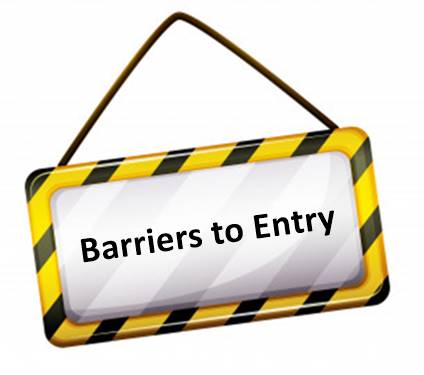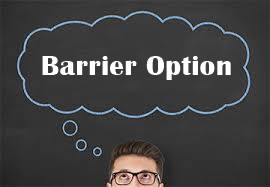Barriers to Entry
What are Barriers to Entry?
Barriers to entry are the economic term that describes the existence of obstacles, such as high beginning costs, and more that avert new competitors from making their way into an Industry seamlessly.

Generally, barriers to entry provide advantages to existing firms as they get to easily safeguard their profits and revenue. Some of the common obstacles include patents, high customer switching costs, substantial brand identity, customer loyalty, tax benefits to already existing firms, and more. Others may consist of the need to acquire regulatory clearance and licencing before starting the business.
How Barriers to Entry Work?
There are some barriers to entry that exist because of the intervention by the government. And, there are some such barriers that exist in the free Market as well. Generally, firms in the industry allow the government to come up with new barriers to keep the integrity intact and avert new competitors from bringing inferior things into the market.
Usually, companies favour barriers when they are put in action to limit competition and claim a substantial share in the market. Considering that there are always such players that dominate the industry; these barriers to entry get evolved over time.
Talk to our investment specialist
Types of Barriers to Entry
There are two major types of barriers to entry:
Barriers to Entry by Government
Usually, industries that are regulated by the government are difficult to step in. Cable companies, defence contractors, commercial airlines and more are some of the examples. There are a variety of reasons that compel the authorities to create formidable barriers.
For instance, in the commercial airline industry, regulations are firm, and the government also puts limitations to restrict the air traffic and enabling ease of monitoring. And, as far as cable companies are concerned, the regulations are imposed because of the massive public Land usage that goes in building the infrastructure.
However, there are some such situations when the government imposes barriers because of rising pressure by the existing company. For instance, in several states, government licensing is needed to become architecture and a restaurant owner.
Natural Barriers to Entry
Apart from government policies, barriers to entry can also be created naturally as the industry takes a dynamic shape. The ones who are trying to enter a specific niche, customer loyalty and brand identity can be significant natural barriers to entry.
Certain brands like Apple, Samsung, Lenovo and more are so strong that their users are spread across the world. Another barrier could be a high consumer switching cost, courtesy to the difficulty that a new entrant facing in attracting customers.
All efforts have been made to ensure the information provided here is accurate. However, no guarantees are made regarding correctness of data. Please verify with scheme information document before making any investment.





